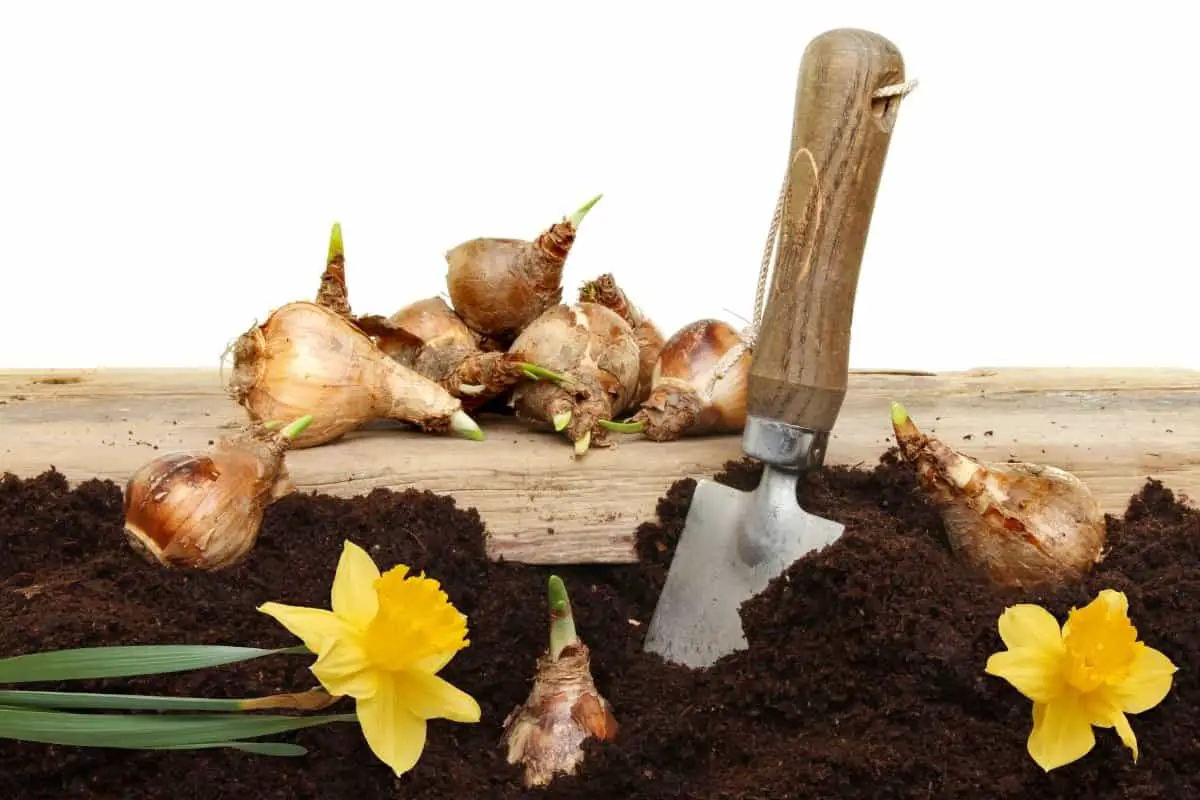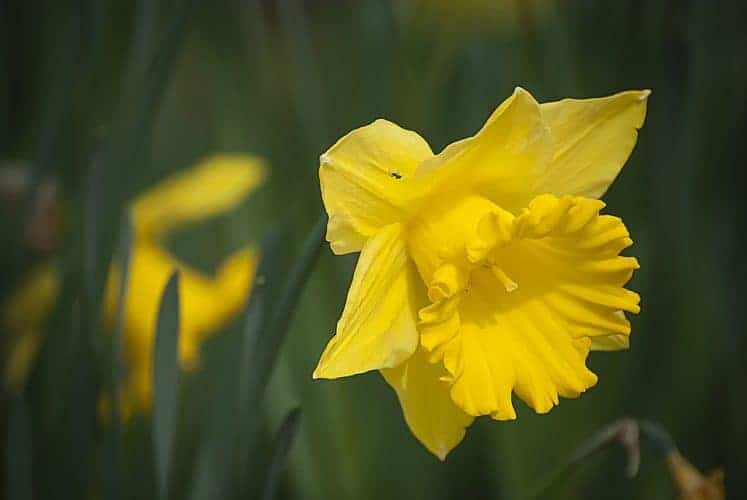Choosing the Perfect Spot for Your Daffodils
Selecting a location with the right amount of sunlight, soil type, and drainage is crucial for optimal daffodil growth. Daffodils require a spot that receives at least six hours of direct sunlight per day, as this will promote healthy growth and blooming. Additionally, the soil type plays a significant role in daffodil growth, with well-draining soil being essential to prevent waterlogged soil conditions. When considering drainage, it’s essential to avoid planting in low-lying areas where water may collect. By choosing a location that meets these requirements, you’ll be setting your daffodils up for success and ensuring they thrive.
Understanding Daffodil Bulb Depth: A Crucial Factor in Success
Planting daffodil bulbs at the correct depth is vital for their growth and development. When planted too shallow, daffodil bulbs may not receive enough protection from extreme temperatures and may be more susceptible to disease. On the other hand, planting too deep can lead to delayed blooming and reduced foliage growth. The ideal depth for planting daffodil bulbs allows the bulb to receive the necessary amount of sunlight and water while being protected from harsh weather conditions. By understanding the importance of planting daffodil bulbs at the correct depth, gardeners can ensure their daffodils bloom beautifully and thrive for years to come. Knowing how deep to plant daffodil bulbs is crucial, as it directly affects the overall health and appearance of the plant.
How to Plant Daffodil Bulbs: A Step-by-Step Guide
Planting daffodil bulbs is a straightforward process that requires some planning and attention to detail. To ensure success, follow these steps to plant your daffodil bulbs correctly. First, prepare the soil by loosening it to a depth of about 12 inches. Add a 2-inch layer of compost or well-rotted manure to improve drainage and fertility. Next, determine the correct depth for planting your daffodil bulbs, considering factors such as soil type and bulb size. A general rule of thumb is to plant bulbs at a depth that is two to three times their height. For example, if the bulb is 2 inches tall, plant it 4-6 inches deep. When planting, space bulbs 3-6 inches apart, depending on the variety. Plant the bulbs with the pointed end facing upwards and the flat base facing downwards. Fill the hole with soil, gently firming it around the bulb to prevent air pockets. Water well to settle the soil. By following these steps and understanding how deep to plant daffodil bulbs, you’ll be well on your way to growing beautiful, thriving daffodils.
The Ideal Depth for Daffodil Bulbs: A General Rule of Thumb
When it comes to planting daffodil bulbs, one of the most critical factors to consider is the depth at which they are planted. Planting at the correct depth is essential for optimal growth and development. As a general rule of thumb, daffodil bulbs should be planted at a depth that is two to three times their height. This means that if the bulb is 2 inches tall, it should be planted 4-6 inches deep. However, this can vary depending on the type of daffodil and the soil type. For example, smaller bulbs like ‘Tete-a-Tete’ and ‘Jetfire’ can be planted at a depth of 3-4 inches, while larger bulbs like ‘King Alfred’ and ‘Mount Hood’ may require a depth of 6-8 inches. In heavy clay soils, it’s best to plant bulbs at a slightly shallower depth to prevent waterlogging, while in sandy soils, a deeper planting depth can help retain moisture. By understanding how deep to plant daffodil bulbs, gardeners can ensure their daffodils receive the right amount of sunlight, water, and nutrients to thrive.
Factors to Consider When Planting Daffodil Bulbs at the Right Depth
When determining the ideal depth for planting daffodil bulbs, several factors come into play. One crucial consideration is soil density. In dense, heavy soils, bulbs may need to be planted at a slightly shallower depth to prevent waterlogging and rot. On the other hand, in light, sandy soils, bulbs can be planted at a deeper depth to ensure they receive adequate moisture. Bulb size is another important factor, as larger bulbs typically require a deeper planting depth than smaller ones. Climate also plays a role, as bulbs planted in areas with harsh winters may need to be planted at a deeper depth to protect them from freezing temperatures. Additionally, the type of daffodil being planted can also impact the ideal planting depth. For example, some varieties, like ‘Trumpet’ daffodils, may require a deeper planting depth than others, like ‘Cyclamine’ daffodils. By taking these factors into account, gardeners can ensure they are planting their daffodil bulbs at the right depth, which is critical for optimal growth and blooming. Understanding how deep to plant daffodil bulbs is key to achieving beautiful, thriving flowers that will return year after year.
Common Mistakes to Avoid When Planting Daffodil Bulbs
When planting daffodil bulbs, it’s essential to avoid common mistakes that can hinder their growth and blooming. One of the most critical mistakes is planting bulbs at the wrong depth. Planting too shallow can cause the bulbs to rot, while planting too deep can prevent them from receiving adequate sunlight and water. Another mistake is not preparing the soil properly, which can lead to poor drainage and nutrient deficiencies. Additionally, failing to space bulbs correctly can result in overcrowding, which can spread disease and reduce blooming. To avoid these mistakes, it’s crucial to understand how deep to plant daffodil bulbs and to follow a step-by-step guide for planting. By doing so, gardeners can ensure their daffodils receive the right amount of sunlight, water, and nutrients to thrive. Furthermore, it’s essential to choose high-quality bulbs and to plant them at the right time, typically in the fall or early spring. By avoiding these common mistakes, gardeners can enjoy beautiful, thriving daffodils that will bloom year after year.
Tips and Tricks for Planting Daffodil Bulbs in Different Soil Types
When it comes to planting daffodil bulbs, understanding the specific needs of different soil types is crucial for optimal growth and blooming. In clay soils, which tend to be heavy and dense, it’s essential to plant bulbs at a slightly shallower depth to prevent waterlogging. In sandy soils, which are light and well-draining, bulbs can be planted at a deeper depth to ensure they receive adequate moisture. Loamy soils, which are rich in organic matter, provide an ideal environment for daffodils, and bulbs can be planted at the recommended depth for the specific variety. Additionally, gardeners should consider the pH level of their soil, as daffodils prefer slightly acidic to neutral soils. By understanding how deep to plant daffodil bulbs in different soil types, gardeners can ensure their bulbs receive the right amount of water, nutrients, and sunlight to thrive. Furthermore, adding organic matter such as compost or well-rotted manure can improve soil structure and fertility, leading to healthier, more vibrant daffodils. By following these tips and tricks, gardeners can enjoy beautiful, blooming daffodils that will return year after year.
Aftercare and Maintenance: Ensuring Your Daffodils Thrive
Once daffodil bulbs are planted, it’s essential to provide proper aftercare and maintenance to ensure they bloom beautifully and come back year after year. Watering is crucial, especially during the first growing season, as it helps establish a strong root system. Aim to provide about 1 inch of water per week, either through rainfall or irrigation. Fertilizing is also important, as it provides essential nutrients for growth and development. A balanced, slow-release fertilizer applied in the spring can promote healthy growth and blooming. Deadheading, or removing spent flowers, is another important task, as it encourages the bulb to focus its energy on re-growing and storing energy for next year’s bloom. Additionally, consider adding a layer of mulch around the base of the plants to retain moisture, suppress weeds, and regulate soil temperature. By following these simple aftercare and maintenance tips, gardeners can enjoy a vibrant display of daffodils that will return year after year, and even naturalize over time. Remember, proper care and attention can make all the difference in the success of daffodil planting, so be sure to plant at the correct depth, and provide the necessary care and attention to ensure optimal growth and blooming.








